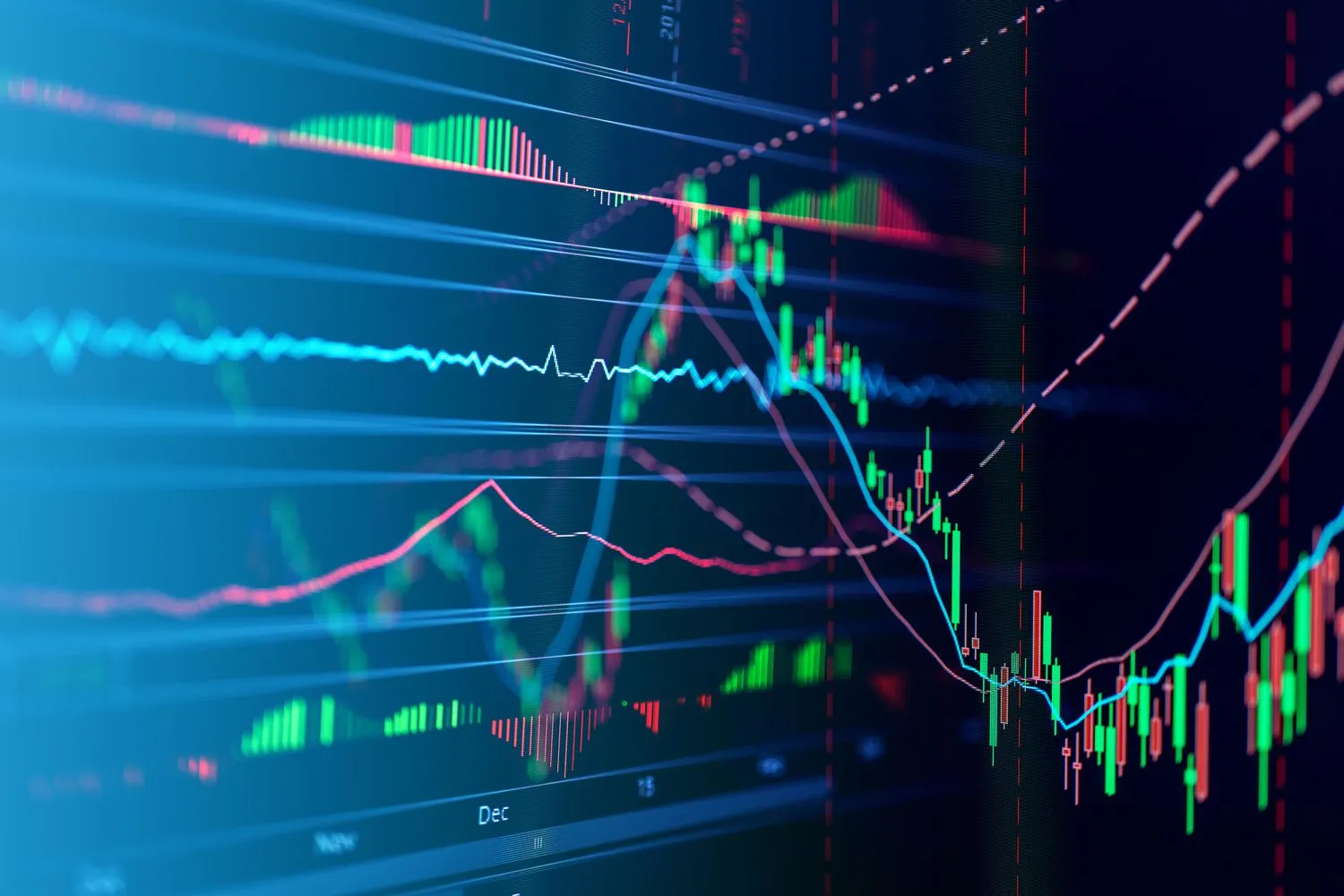Global Indexes: Country-Level Performance and Trends (2020–2025)
Build the future you deserve. Get started with top-tier courses in ACCA, HESI A2, ATI TEAS 7, HESI EXIT, NCLEX-RN, NCLEX-PN, and Financial Literacy. Let Serrari Ed guide your path to success. Enroll today.
Key
| Field | Definition |
| Date | Last trading day of the month (YYYY-MM-DD) |
| Close | Index closing price on that date |
| High | Highest intramonth index price |
| Low | Lowest intramonth index price |
| Open | Index opening price on the first trading day of the month |
| Volume | Total shares (or contracts) traded during the month |
| Index_Name | Internal identifier for the index (e.g. FTSE_100, DAX_40, S&P_500) |
| Ticker | Exchange ticker symbol (e.g. ^GSPC for S&P 500, ^IXIC for Nasdaq) |
| Country | Country in which the index is domiciled |
| Region | Geographical region (e.g. “Europe,” “Asia-Pacific,” “North America”) |
| Continent | Continent (e.g. “Europe,” “Asia,” “Africa”) |
| Currency | Local currency code (e.g. USD, GBP, HKD) |
| Latitude | Latitude of the index’s primary exchange (for mapping) |
| Longitude | Longitude of the index’s primary exchange |
| Year | Calendar year extracted from Date |
| Quarter | Quarter of the year (1–4) in which Date falls |
| Month | Month number (1–12) |
| Week | ISO week number of the year |
| Day | Day of the month (1–31) |
| Day_of_Week | Numeric code for weekday (0 = Monday … 6 = Sunday) |
| Day_Name | Name of the weekday (“Monday,” “Tuesday,” etc.) |
| Daily_Return | (Closet/Closet−1)−1(\text{Close}_t / \text{Close}_{t-1}) – 1, the percent change from prior month’s close |
| Cumulative_Return | Total compounded return since the series start (e.g. as a multiplier or percentage) |
| MA_50 | 50-month moving average of Close, smoothing medium-term trend |
| MA_200 | 200-month moving average of Close, highlighting long-term trend |
| Volatility_10D | Standard deviation of the last 10 monthly returns (proxy for 10-period risk) |
| Volatility_30D | Standard deviation of the last 30 monthly returns |
| Normalized_Value | Index value rescaled so every series starts at the same base (e.g. 100) for percentage-based comparisons across different indices |
Part 1: What are Indexes and how do they work

What Are Stock Market Indexes?
A stock market index is a benchmark that measures the performance of a specific group of stocks. These stocks are usually chosen based on:
- Geography (e.g., U.S. companies)
- Industry (e.g., tech sector)
- Company size (e.g., large-cap stocks)
Indexes are indicators of how a market or sector is performing and are commonly used by investors to track trends, compare performance, or invest passively via index funds.
How Do Indexes Work?
- Stock Selection
Each index has specific criteria for the stocks it includes, such as:- Market capitalization
- Trading volume (liquidity)
- Industry or sector
- Geographic region
- Market capitalization
- Weighting Method
Indexes use different weighting methods to assign importance to each stock:
| Weighting Type | Description | Example Index |
| Price-weighted | Stocks with higher prices influence the index more | Dow Jones Industrial Average (DJIA) |
| Market cap-weighted | Larger companies (by market cap) have more influence | S&P 500 , NASDAQ Composite |
| Equal-weighted | Every stock has the same weight regardless of size | Invesco S&P 500® Equal Weight ETF (RSP) |
| Fundamental-weighted | Based on earnings, revenue, or book value | FTSE RAFI US 1000 Index |
Index Calculation
The value of an index is computed using the formula:
Index Value = (Sum of weighted stock prices) / Divisor
- The divisor is a figure used to normalize the index value, accounting for stock splits or other corporate actions.
Popular Global Indexes

| Index Name | Country/Region | Key Features |
| S&P 500® | USA | 500 large-cap U.S. companies; market cap-weighted |
| Dow Jones Industrial Average | USA | 30 blue-chip U.S. stocks; price-weighted |
| NASDAQ Composite | USA | Tech-heavy, over 3,000 stocks |
| FTSE 100 | UK | 100 largest companies on the London Stock Exchange |
| DAX 40 | Germany | 40 major German companies |
| Nikkei 225 | Japan | 225 top Japanese companies; price-weighted |
| Shanghai Composite | China | All stocks listed on the Shanghai Stock Exchange |
| Sensex | India | 30 largest companies on the Bombay Stock Exchange |
| MSCI World Index | Global | Developed market stocks from 23 countries |
Why Indexes Matter
| Use Case | Explanation |
| Market Snapshot | Reflects the health or performance of a market/sector |
| Benchmarking | Used by investors to compare how their portfolios are performing |
| Passive Investing | Basis for index funds and ETFs, allowing low-cost exposure |
| Economic Indicator | Often used by economists and policymakers to track economic sentiment |
Real-Life Example
If the S&P 500® rises by 1.5% today:
- This implies that the overall market value of the top 500 U.S. companies increased.
- Investors in an S&P 500 ETF (like SPDR® S&P 500 ETF Trust (SPY) or Vanguard S&P 500 ETF (VOO)) likely saw similar gains.
- It may signal strong investor confidence in the U.S. economy.
Summary
| Feature | Description |
| Indexes | Represent performance of a group of stocks |
| Used For | Market tracking, benchmarking, investment |
| Types | Based on weighting and selection criteria |
| Tracked By | Analysts, economists, investors worldwide |
Part 2: Financial Insights
Indexed Performance Comparisons based on Normalised Values
By normalizing all index values to a base of 100 in mid-2020, performance gaps become more evident.
Normalized Performance Insights:
- Top Performers
- DAX 40: Ends near 215, meaning it more than doubled (≈115% gain) since baseline.
- EURO STOXX 50: ~195 (≈95% gain).
- S&P 500: ~194 (≈94% gain).
- NASDAQ Composite: ~193 (≈93% gain).
- DAX 40: Ends near 215, meaning it more than doubled (≈115% gain) since baseline.
- Mid-Tier
- FTSE 100: ~148 (≈48% gain).
- Dow Jones & CAC 40 & Nikkei 225 & JSE Top 40: 180–185 range (≈80–85% gain).
- FTSE 100: ~148 (≈48% gain).
- Underperformer
- Hang Seng Index: Stagnated around ~97 (≈3% loss), reflecting significant mid-period drawdowns and incomplete recovery by May 2025.
- Hang Seng Index: Stagnated around ~97 (≈3% loss), reflecting significant mid-period drawdowns and incomplete recovery by May 2025.
- Key Takeaways
- Germany (DAX) led normalized performance, validating its strong annualised return.
- Broad European (EURO STOXX 50) and major U.S. indices (S&P, Nasdaq) all achieved near-doubling from 2020 to 2025.
- Emerging/Local Markets like Hong Kong lagged, never matching the 100-base level post-2020.
- Germany (DAX) led normalized performance, validating its strong annualised return.
This normalized view confirms percentage-based outperformance and highlights where investors saw the greatest compounded growth relative to starting levels.
Cumulative Returns Reveal Long-Term Strength and Weakness
A comparison of cumulative returns across global indexes shows a wide divergence in performance from 2020 to 2025. Markets such as Germany’s DAX (+94%), the U.S. Nasdaq (+84%) and S&P 500 (+83%), and South Africa’s JSE Top 40 (+81%) posted robust gains, outperforming peers. In contrast, the FTSE 100 gained just 40%, while Hong Kong’s Hang Seng showed negligible progress with only a 0.6% gain over the same period.
These results reflect a mix of regional economic momentum, structural factors, and investor sentiment.
While Germany and the U.S. benefited from strong post-pandemic recoveries and technology sector growth, the Hang Seng struggled under the weight of domestic policy uncertainty and global geopolitical pressures.
The FTSE 100’s relatively flat trajectory underscores broader concerns over UK economic performance and Brexit-related fallout.
Notably, South Africa’s JSE Top 40 has demonstrated resilience despite broader emerging market volatility. It stands out for having regained and surpassed previous highs, with a relatively shallow drawdown (~17.6%) compared to Hong Kong, which experienced a ~50% peak-to-trough decline and remains far below its former levels.
Technical Signals: Moving Average Crossovers Highlight Momentum Shifts
Analysis of short- and long-term moving averages reveals divergent regional signals. A “golden cross” (where the 50-day moving average rises above the 200-day) typically signals bullish momentum, while a “death cross” (50-day MA below 200-day) points to a bearish outlook.
As of May 2025:
- Bullish Signals (Golden Cross): France (CAC 40), Germany (DAX), Euro Stoxx 50, FTSE 100, Hang Seng, and JSE Top 40 all have their MA_50 above MA_200.
- Bearish Signals (Death Cross): U.S. indices (S&P 500, Nasdaq, Dow) and Japan’s Nikkei show MA_50 below MA_200.
This suggests that, at present, short-term momentum favors European and South African equities, while U.S. markets show signs of consolidation or weakness. The structure of these moving average crossovers supports a narrative of regional rotation, where investor interest is shifting from U.S. to international markets.
Volatility Patterns Vary by Region
Volatility analysis (measured as the standard deviation of 30-day returns) indicates the following:
- Highest Volatility: Asia-Pacific markets, particularly Hong Kong and Japan, with average monthly volatility exceeding 1.3%.
- Moderate Volatility: North American markets, including U.S. indices.
- Lowest Volatility: European markets (France, Germany, UK) average ~0.97%, indicating relative calm.
The data confirms that Asia-Pacific remains the most turbulent region for investors, while Europe exhibits lower risk. Hong Kong’s elevated volatility reflects its exposure to both regional political uncertainty and speculative trading behavior.
Liquidity Signals Strength Behind Moves
Trading volume, a measure of market liquidity and investor conviction, shows stark regional variation:
Liquidity Analysis:
- Top Liquidity Leaders
- NASDAQ Composite and S&P 500 lead by a wide margin, each averaging over 2 billion monthly shares traded.
- Hang Seng Index follows, with roughly 1.8 billion per month, then FTSE 100 (~1 billion) and Dow Jones (~600 million).
- NASDAQ Composite and S&P 500 lead by a wide margin, each averaging over 2 billion monthly shares traded.
- Medium-Tier Markets
- Nikkei 225, CAC 40, and DAX 40 average between 80 million and 120 million. These are still quite liquid but an order of magnitude below U.S. and Hong Kong benchmarks.
- Nikkei 225, CAC 40, and DAX 40 average between 80 million and 120 million. These are still quite liquid but an order of magnitude below U.S. and Hong Kong benchmarks.
- Lower-Tier Markets
- EURO STOXX 50 trades at ~40 million monthly.
- JSE Top 40 (South Africa) shows the thinnest volumes, under 1 million per month, indicating limited liquidity.
- EURO STOXX 50 trades at ~40 million monthly.
- Implications
- High-Liquidity markets like the U.S. and Hong Kong offer tighter spreads and easier large-order execution, ideal for traders and institutions.
- Medium-Liquidity markets (Europe, Japan) are suitable for longer-term positions but may face slippage in large trades.
- Low-Liquidity markets (South Africa) carry execution risk and higher transaction costs, better for smaller or long-term commitments.
- High-Liquidity markets like the U.S. and Hong Kong offer tighter spreads and easier large-order execution, ideal for traders and institutions.
Currency Effects on Returns
All index data are in local currencies. For international investors, currency fluctuations can significantly affect returns. For example:
- A strengthening domestic currency diminishes foreign investor gains once converted.
- A weakening domestic currency enhances foreign investor returns.
Between 2020 and 2025, most major currencies (USD, EUR, JPY) moved within a ±5% band, limiting distortions. However, during certain months, sharp FX swings could have affected short-term performance, particularly in portfolios unhedged against currency risk.
Sentiment Contagion Observed Across Regions
Correlated movements in indexes suggest that sentiment travels across borders. For example:
- U.S. indices (Dow, Nasdaq, S&P 500) often moved together, driven by centralized news flow and earnings season effects.
- European markets displayed synchronous movement, reflecting shared economic expectations around inflation, interest rates, and monetary policy.
- Asian markets were more fragmented, with Hong Kong and Japan often reacting to domestic events rather than global cues.
This phenomenon, sometimes described as “sentiment contagion,” reflects how investor mood in one market can spill over into others through global fund flows and risk sentiment adjustments.
Seasonality Trends Match Market Lore
Analysis of calendar-based patterns revealed well-known seasonal trends:
- Stronger Months: November to April, aligning with “Santa Claus rallies” and post-summer momentum.
- Weaker Months: May to September, confirming the adage “Sell in May and go away.”
- Day-of-Week Patterns: Fridays tend to outperform, while Mondays underperform, consistent with behavioral finance studies on the “Monday Effect.“
For example, December and January frequently show green on monthly heatmaps across multiple countries, while June, July, and August often reflect stagnation or mild losses.
Summary of Key Country-Level Observations: Annualised Return v Volatility
| Index Name | Annualised Return | Annualised Volatility |
| CAC 40 | 10.65% | 16.25% |
| DAX 40 | 15.89% | 16.42% |
| Dow Jones | 10.83% | 15.97% |
| EURO STOXX 50 | 13.35% | 16.80% |
| FTSE 100 | 7.58% | 11.38% |
| Hang Seng Index | 0.13% | 24.84% |
| JSE Top 40 | 13.55% | 15.32% |
| NASDAQ Composite | 14.21% | 19.25% |
| Nikkei 225 | 11.73% | 15.26% |
| S&P 500 | 14.08% | 15.54% |
From 2020 to 2025, global equity performance has diverged significantly across regions. Long-term winners like Germany and South Africa have built sustained momentum, while Hong Kong remains mired in stagnation. Technical indicators currently favor European and emerging markets over U.S. stocks, and volatility patterns support a more risk-averse stance in Asia-Pacific.
Cyclical patterns, sentiment contagion, and trading volume all reinforce the broader takeaway: while macro conditions may appear similar, local market structure, liquidity, and investor psychology continue to drive country-level differentiation.
Part 3: Investor Scenarios
- Short Term Investor
Recommended Index: FTSE 100
Why:
- Low Volatility (11.38%): Short-term investors prioritize capital preservation over high returns.
- Moderate Return (7.58%): While not the highest, it provides stable performance.
- Market Characteristics: The FTSE 100 includes large-cap, dividend-paying UK companies, making it less volatile and suitable for shorter investment horizons.
- Investment Index: FTSE 100
- Annual Return (in GBP): 7.58%
- Initial Exchange Rate: 1 GBP = 171.83 KES
- Investment Period: 1 year
- Initial Investment: Let’s assume KES 1,000,000
So initially:
- You convert KES 1,000,000 ÷ 171.83 ≈ GBP 5,820.58
After one year, that grows by 7.58%:
- GBP Investment Value = 5,820.58 × 1.0758 ≈ GBP 6,263.29
Now convert back to KES under each of the three currency scenarios:
1. KES Remains Unchanged (171.83)
- KES Value = 6,263.29 × 171.83 ≈ KES 1,076,000
- Profit = KES 76,000
- Return in KES = 7.6%
Same as GBP return because exchange rate didn’t change.
2. KES Appreciates by 10% (New Rate = 154.647)
- KES Value = 6,263.29 × 154.647 ≈ KES 968,400
- Loss = KES 31,600
- Return in KES = -3.16%
Your investment grows in GBP, but stronger KES hurts your returns when converting back.
3. KES Depreciates by 10% (New Rate = 189.013)
- KES Value = 6,263.29 × 189.013 ≈ KES 1,183,300
- Profit = KES 183,300
- Return in KES = 18.3%
Weaker KES amplifies your return when converting back.
Summary for Short-Term Investor
| Scenario | Ending Value (KES) | Return (%) |
| KES Unchanged | 1,076,000 | +7.6% |
| KES Appreciates 10% | 968,400 | -3.16% |
| KES Depreciates 10% | 1,183,300 | +18.3% |
- Long Term Investor
NASDAQ Composite
Snp500
Recommended Index: S&P 500 or NASDAQ Composite
Why S&P 500:
- Strong Return (14.08%) with Moderate Volatility (15.54%)
- Broad exposure to the U.S. economy and top-performing sectors.
- Proven long-term wealth builder with diversification.
Why NASDAQ:
- Higher Return (14.21%) but Higher Volatility (19.25%)
- Heavily tech-focused, it offers strong growth potential, ideal for long-term investors willing to ride out short-term volatility.
- Investment Index: S&P 500
- Annual Return (in USD): 14.08%
- Initial Exchange Rate: 1 USD = 129.40 KES
- Investment Period: 1 year
- Initial Investment: KES 1,000,000
So initially:
- You convert KES 1,000,000 ÷ 129.4 ≈ USD 7,728.71
After one year:
- USD Investment Value = 7,728.71 × 1.1408 ≈ USD 8,818.65
Now convert back to KES under each of the three currency scenarios:
1. KES Remains Unchanged (129.40)
- KES Value = 8,818.65 × 129.40 ≈ KES 1,141,056
- Profit = KES 141,056
- Return in KES = 14.1%
Same as USD return since the exchange rate is unchanged.
2. KES Appreciates by 10% (New Rate = 116.46)
- KES Value = 8,818.65 × 116.46 ≈ KES 1,026,919
- Profit = KES 26,919
- Return in KES = 2.69%
KES strength cuts into your USD gains.
3. KES Depreciates by 10% (New Rate = 142.34)
- KES Value = 8,818.65 × 142.34 ≈ KES 1,255,200
- Profit = KES 255,200
- Return in KES = 25.5%
Weakening KES significantly boosts your returns.
Summary for Long-Term Investor (S&P 500)
| Scenario | Ending Value (KES) | Return (%) |
| KES Unchanged | 1,141,056 | +14.1% |
| KES Appreciates 10% | 1,026,919 | +2.7% |
| KES Depreciates 10% | 1,255,200 | +25.5% |
Trader
Recommended Index: Hang Seng Index
Why:
- Very High Volatility (24.84%): Traders seek price movements to profit in the short run.
- Low Return (0.13%): Doesn’t matter much for traders who benefit from frequent swings, not long-term growth.
- Volatility = Opportunity: The index’s sharp ups and downs create more trading setups.
- Investment Index: Hang Seng Index
- Annual Return (in HKD): 0.13% (minimal return; traders rely on volatility, not compounding)
- Initial Exchange Rate: 1 HKD = 16.57 KES
- Investment Period: 1 year
- Initial Investment: KES 1,000,000
So initially:
- You convert KES 1,000,000 ÷ 16.57 ≈ HKD 60,343.31
After one year:
- HKD Investment Value = 60,343.31 × 1.0013 ≈ HKD 60,422.77
Now convert back to KES under each of the three currency scenarios:
1. KES Remains Unchanged (16.57)
- KES Value = 60,422.77 × 16.57 ≈ KES 1,000,813
- Profit = KES 813
- Return in KES = +0.08%
Flat result—neither the market nor the currency moved meaningfully.
2. KES Appreciates by 10% (New Rate = 14.913)
- KES Value = 60,422.77 × 14.913 ≈ KES 901,176
- Loss = KES 98,824
- Return in KES = –9.88%
KES strength wipes out any gains, leading to a near 10% loss.
3. KES Depreciates by 10% (New Rate = 18.227)
- KES Value = 60,422.77 × 18.227 ≈ KES 1,101,330
- Profit = KES 101,330
- Return in KES = +10.13%
Even tiny gains in HKD get amplified when the KES weakens.
Summary for Trader (Hang Seng Index)
| Scenario | Ending Value (KES) | Return (%) |
| KES Unchanged | 1,000,813 | +0.08% |
| KES Appreciates 10% | 901,176 | –9.88% |
| KES Depreciates 10% | 1,101,330 | +10.13% |
Summary Table:
| Investor Type | Recommended Index | Rationale |
| Short-Term Investor | FTSE 100 | Low volatility, capital stability |
| Long-Term Investor | S&P 500 / NASDAQ | Strong long-term returns, broad exposure |
| Trader | Hang Seng Index | High volatility = more trading opportunities |
Part 4: Step-by-step Guide for a Kenyan investor holding Kenyan shillings (KES) to gain diversified exposure to a Global Index
(S&P 500 index Example)
How a Kenyan Can Invest in the S&P 500 Using Kenyan Shillings (KES)
Step 1: Know Your Goals and Comfort Level
- Think about how long you want to invest (e.g., 5, 10, or 20 years).
- Decide what percentage of your portfolio you’re comfortable allocating to U.S. stocks—perhaps 10 % to 50 %.
- Consider your risk tolerance: are you OK with the value fluctuating from day to day?
Step 2: Pick the Right Investment Option
The simplest route is an ETF (exchange-traded fund), which bundles the 500 largest U.S. companies in a single ticker.
- Popular S&P 500 ETFs:
- Mutual funds tracking the S&P 500 are available, but ETFs trade like stocks and often have lower fees.
Step 3: Choose a Broker
You need an online platform that:
- Accepts Kenyan clients
- Offers U.S. ETF trading
- Lets you fund in KES
Recommended brokers:
Compare each on trading fees, deposit/withdrawal charges, and platform usability.
Step 4: Open Your Account
- Sign up on the broker’s website.
- Complete KYC by uploading:
- Valid ID (e.g., passport)
- Proof of address (e.g., utility bill)
- A recent selfie or photo
- Valid ID (e.g., passport)
- Approval typically takes 1–3 business days.
Step 5: Add Money and Convert to USD
- Transfer KES from your Kenyan bank to your broker’s local or designated account.
- Convert to USD within the platform—watch the live rate and conversion fees: XE Currency Converter.
- Some brokers let you hold both KES and USD balances to time your exchanges.
Step 6: Buy Your ETF
- Log in and search for your chosen ETF ticker (e.g., “VOO”).
- Decide between a market order (fills immediately at the best price) or a limit order (only executes at or below your target price):
- Enter your order size (in USD or number of shares) and confirm.
Step 7: Decide What to Do With Dividends
S&P 500 ETFs distribute dividends roughly every quarter. You can:
- Reinvest automatically via a Dividend Reinvestment Plan (DRIP): How DRIPs Work
- Receive cash in your broker account and withdraw or redeploy elsewhere.
Step 8: Keep an Eye on Your Portfolio
- Review performance every 3–6 months.
- Rebalance if your U.S. allocation drifts too far from your original plan.
- Consider dollar-cost averaging by investing a fixed KES amount monthly to smooth out volatility.
- Track prices with free tools like Yahoo Finance.
Step 9: Understand Tax Implications
- U.S. withholding tax: 15 % is automatically deducted from dividends under the U.S.–Kenya tax treaty.
- Kenyan tax: report dividend income and any capital gains to the Kenya Revenue Authority.
- Always consult a local tax advisor for personalized guidance.
Step 10: Keep Your Records
- Save trade confirmations and dividend statements.
- Retain all KES-to-USD conversion receipts.
- Stay updated on any fee or policy changes from your broker.
- Securely archive your documents—KRA may request them during filing season.
Article, Financial and News Disclaimer
The Value of a Financial Advisor
While this article offers valuable insights, it is essential to recognize that personal finance can be highly complex and unique to each individual. A financial advisor provides professional expertise and personalized guidance to help you make well-informed decisions tailored to your specific circumstances and goals.
Beyond offering knowledge, a financial advisor serves as a trusted partner to help you stay disciplined, avoid common pitfalls, and remain focused on your long-term objectives. Their perspective and experience can complement your own efforts, enhancing your financial well-being and ensuring a more confident approach to managing your finances.
Disclaimer: This article is for informational purposes only and does not constitute financial advice. Readers are encouraged to consult a licensed financial advisor to obtain guidance specific to their financial situation.
Article and News Disclaimer
The information provided on www.serrarigroup.com is for general informational purposes only. While we strive to keep the information up to date and accurate, we make no representations or warranties of any kind, express or implied, about the completeness, accuracy, reliability, suitability, or availability with respect to the website or the information, products, services, or related graphics contained on the website for any purpose. Any reliance you place on such information is therefore strictly at your own risk.
www.serrarigroup.com is not responsible for any errors or omissions, or for the results obtained from the use of this information. All information on the website is provided on an as-is basis, with no guarantee of completeness, accuracy, timeliness, or of the results obtained from the use of this information, and without warranty of any kind, express or implied, including but not limited to warranties of performance, merchantability, and fitness for a particular purpose.
In no event will www.serrarigroup.com be liable to you or anyone else for any decision made or action taken in reliance on the information provided on the website or for any consequential, special, or similar damages, even if advised of the possibility of such damages.
The articles, news, and information presented on www.serrarigroup.com reflect the opinions of the respective authors and contributors and do not necessarily represent the views of the website or its management. Any views or opinions expressed are solely those of the individual authors and do not represent the website's views or opinions as a whole.
The content on www.serrarigroup.com may include links to external websites, which are provided for convenience and informational purposes only. We have no control over the nature, content, and availability of those sites. The inclusion of any links does not necessarily imply a recommendation or endorsement of the views expressed within them.
Every effort is made to keep the website up and running smoothly. However, www.serrarigroup.com takes no responsibility for, and will not be liable for, the website being temporarily unavailable due to technical issues beyond our control.
Please note that laws, regulations, and information can change rapidly, and we advise you to conduct further research and seek professional advice when necessary.
By using www.serrarigroup.com, you agree to this disclaimer and its terms. If you do not agree with this disclaimer, please do not use the website.
www.serrarigroup.com, reserves the right to update, modify, or remove any part of this disclaimer without prior notice. It is your responsibility to review this disclaimer periodically for changes.
Serrari Group 2025




